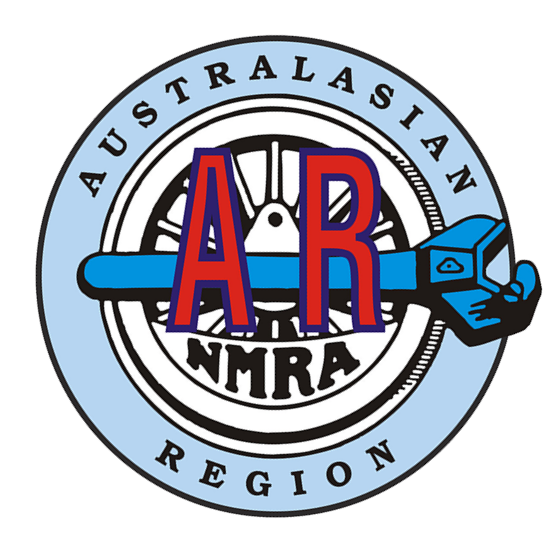In On30 by Jess Brisbane
Layout:
- Scale: On30
- Size: 1.8 m x 7.3 m
- Type: Point-to-point
- Theme: Maine Two-footers with a dash of H. P. Lovecraft, 1925
- Control: Digitrax DCC
- Construction: 60 cm x 120 cm sections, bolted together
- Track work: Hand laid with FastTracks tools and TwistTies
- Height: 80 – 100 cm
Room:
The layout is in a long, skinny enclosed veranda. It’s inside, and so is included in the house’s climate control. This is appreciated in a Canberra winter. As a result of previous experience trying to move a permanently fixed layout, this one is built in sections, so that it can be moved if necessary. This also avoids damaging the walls. I originally intended it to double as an exhibition layout, but difficulties in reliably aligning the track at the section joints scuppered that plan.
Presentation:
The layout consists of a 60 cm deep shelf, with a backdrop behind. The layout represents the Innsmouth branch of the Arkham & Vermont Ry, running north from the city of Arkham to the fishing port of Innsmouth. At present, only room lighting is used, but as this consists of daylight balanced fluorescent fixtures attached to the wall behind the viewer, it gives the effect of late morning sunlight. The layout is designed to be viewed at eye level by a seated operator. Office chairs on wheels are provided.
Track:
Track is hand laid code 70, representing the prototype 35 # rail. The ties are ballasted before the rail is laid. Turnouts are made using FastTracks tools, but not built in a jig. I use the FastTracks TwistTies laser cut tie strips because they can be curved or overlapped as the track plan requires. Turnouts are thrown using Caboose Industries ground throws with an integrated spdt switch that controls frog polarity. Track work is done at the work bench, with track being laid onto pieces of 3 mm MDF or 5 mm Foamcore. Track wiring is also done and debugged on the workbench, so that only a single pair of leads needs to be connected to the track power bus when the completed track section is secured in place.
Wiring:
There are four busses under each section: Digitrax Loconet, track power, 12V DC, and 5V DC. The busses are connected at the section joins by jumper wires or RJ12 female-to-female adapters (in the case of the Loconet). It is not intended to install radio control due to the small size of the layout. If any bus becomes overloaded, a connection can be broken and a new power district added. 12V and 5V accessory power (lights, sound, animation) is switched for each module by a common dpdt switch. Some effects (lighthouse, foghorn, crane) are switched independently.
Scenery:
Scenery is blocked out with stacked and cut Styrofoam. The Styrofoam is then covered with a thin layer of Sculpt-It (an artist’s material that is a combination of paper mache and plaster). This allows the scenery contours to be refined and also keeps the Styrofoam from spreading little white beads all over. The Sculpt-It is painted with acrylic indoor house paint that I had mixed to match a sample of dried dirt from Maine, and covered with an assortment of ground foam, flock, scenic clusters, and poly fibre, all secured with dilute acrylic matt varnish.
The backdrop is layered, with a painted hill contour cut from 3mm MDF and stuck onto the sky-painted MDF backdrop. Photos and low-relief trees and structures are stuck to the backdrop to give a little more depth.
Structures:
Structures are mostly scratch built with a few craftsman kits. Since the layout is so narrow, virtually the whole thing is foreground, and so most structures are well detailed. Structures with large windows generally have illuminated and detailed interiors. Structures in Innsmouth are mostly timber; structures in Arkham are mostly masonry. Some contain speakers for sound effect tracks (boatyard, factory), and some contain LEDs operated by custom circuits for visual effects (lighthouse, crypt, giant mutant firefly forest). Structures receive a light wash of the basic dirt colour as part of the weathering process. This helps to give a consistent visual impression.
Each structure or group of structures is built on a piece of mdf and secured to the layout when completed. Some structures are removable; in this case, loose scenery materials hide the gap and any accessory power leads plug into sockets mounted on the baseboard.
Operation:
This is still being researched, but I foresee local switching at Arkham and at Innsmouth, with a modest number of trains running between them to a tight schedule. There will also be interchange with the rest of the A&V system at Arkham.
